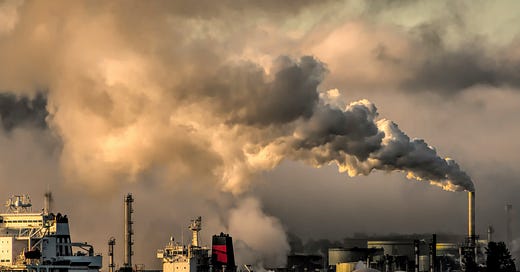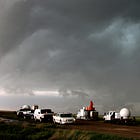Environmental Protection Administrator moves to abandon EPA mission
Trump-appointed EPA Administrator Lee Zeldin has made public statements declaring his intention to remove environmental protections to enable polluters.
This week, the new head of the Environmental Protection Agency, Lee Zeldin, announced plans to unwind or cease enforcment of 31 environmental regulations that help to limit pollution and protect the American people. Zeldin explicitly said his aim is to make more energy production from coal, oil, and gas possible, and he used oddly violent rhetoric, describing his action as “driving a dagger straight into the heart of the climate change religion”.
Zeldin appears to be either misled or deliberately misleading on a number of points:
The mission of the EPA is to prevent pollution and protect public health—not “to unleash” polluting practices.
He claims to be removing a “hidden tax” in the form of “regulatory costs”, but he ignores the high-value benefits to the American people of reducing harm to human health and reducing climate impact costs.
He appears to view pollution control as a political choice, when it is a legally mandated requirement.
He expresses the view that climate change may not actually create any danger, though that has been recognized in univerally accepted science, and in treaties and statutes, and by the Supreme Court.

Zeldin’s actions and statements are just the latest example of an administration that misunderstands (or misrepresents and misuses) its authority.
A President is elected, after running a political campaign, yes, but Presidents do not have legal authority to impose their personal views on the country, regardless of what the real-world impacts will be and regardless of what the law says.
Presidential actions must align with written law.
By extension, Cabinet officials and other heads of federal agencies are not legally empowered to reverse decades of legally required work or sabotage the mission-aligned work of their agencies.
Being elected or appointed by an elected leader does not allow anyone to unilaterally alter what has been established by law.
For a long time, we have been conditioned to hear and read the word “environment” as a matter of personal political preferences. Some people “care about the environment”, and others are focused on other priorities. Politicians use this skewed understanding of the environment to justify their candidacy—either as champions for environmental protection or as people who are concerned with other, more everyday matters.
The environment is simply a way of saying “everything around us”. We are the environment, and the environment is us. It is comprised of and affected by our activities; it is inside us, around us, and determines what we live and whether we are safe and healthy or whether we are at risk and subject to ill health and early death.
The Environmental Protection Agency was created with the foundational mission to keep the environment clean, to protect human health and wellbeing. Its establishment was a response to three major factors:
The growing realization in the 1960s that pollution was causing widespread, devastating harm to the natural world—including to water resources, to clean air and by extension to human health, and to the viability of ecosystems on which agriculture and all human lives depend;
The increasing awareness that human industry was reaching such capacity and scale it was putting the ability of our planet to meet human needs at risk, which coincided with the U.S. space program driving apprecation of the uniqueness of life-giving planetary systems;
The mandates inherent in the U.S. Constitution to “establish Justice, insure domestic Tranquility, provide for the common defence, promote the general Welfare, and secure the Blessings of Liberty to ourselves and our Posterity” and to guarantee the right to pursue redress to every person subjected to harm.
For these reasons, the EPA was tasked with pollution control. Naturally, many businesses that depend on polluting practices to generate their profits view the enforcement of pollution limits as inconvenient, but history shows that is not actually the case.
Environmental protection creates expanded economic value. It makes communities healthier and more active and vibrant, creates new opportunities for investment, and incentivizes hotter competition and innovation in the business sector.
According to findings published in The Journal of Pedriatrics:
“the benefits [of Clean Air Act regulations] were estimated as much as $50 trillion as compared with implementation costs of $523 billion.”
Those businesses that are able to innovate and operate more cleanly can earn more, benefit from more robust and reliable public incentives, and gain market share. Environmental regulations also help to drive compliance, which reduces liability.
What gets lost in the obsessive anti-government rhetoric of the least innovative, big polluters—who invest heavily in this kind of sabotage of environmental protection—is that without detailed, clear, evidence-based federal regulations, their ability to demonstrate compliance is greatly reduced. That removes a major safeguard against unlimited liability for harm they knowingly cause through their operations.
This benefit is further enhanced by economy-wide ripple effects of industrial value chains pursuing cleaner options. The clear signal of strong environmental protection incentivizes not only the regulated industries to innovate, but all of their suppliers as well. It creates vast new opportunities for high-value public incentives at local, state, and national levels, and enhances the clean premium value of goods and services produced in the U.S. or for sale in the U.S.
Without environmental protection, it is much harder to make the case that profitable businesses have earned their revenues based on high performance in a competitive marketplace. Environmental protection helps everyone from government to investors and consumers better assess merit and make decisions based on quality and performance.
The actions announced by EPA Administrator Zeldin appear to be an unlawful attempt to undermine mission implementation and enable unlawful and harmful pollution. These questions will be fought out in the courts, possibly for years to come. In the meantime, from the moment non-enforcement signals are sent, pollution tends to increase and innovation tends to slow—creating real costs to the American people in terms of ill health, premature death, and widespread economic harm.
Climate Value: The missing piece
As governments, industries, and communities, grapple with the rising costs of climate impacts, and still-too-slow action to stop those costs from growing, it is increasingly clear that multidimensional Climate Value measurements are needed to drive everyday decision-making.








